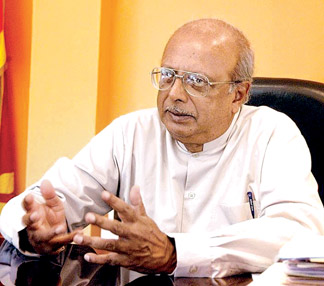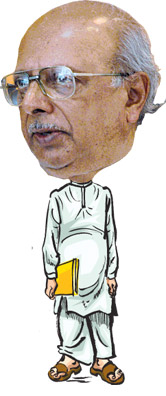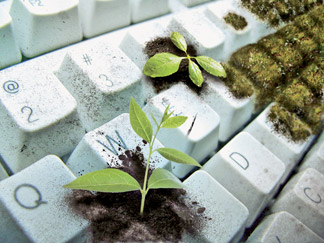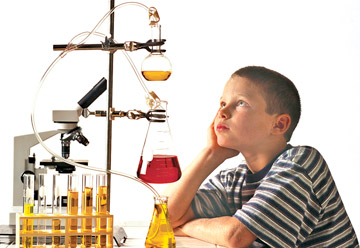Improving science, technology vital to win economic war- Prof
Tissa Vitharana
By Dhameshi Tatawara
*Low output of postgraduate research degrees by Sri Lankan
universities
*Need to establish National Cadre of Researchers
 On November 10, the world would admire the marvels of science and
honour the heroes of technology and research as it is the World Day for
Science. Established by the United Nations Educational, Scientific and
Cultural Organisation (UNESCO), the World Science Day for Peace and
Development was established in 2001 to raise awareness of the benefits
of science to the world. On November 10, the world would admire the marvels of science and
honour the heroes of technology and research as it is the World Day for
Science. Established by the United Nations Educational, Scientific and
Cultural Organisation (UNESCO), the World Science Day for Peace and
Development was established in 2001 to raise awareness of the benefits
of science to the world.
The World Science Day for Peace and Development this year recognises
the role of science in facilitating the repprochment of people and
cultures through its contribution to the advancement of ‘mutual
knowledge and understanding of people.’
This year’s event symbolises the world’s tribute to the contribution
of various civilisations from different parts of the world that helped
form the basis of science. With the day right around the corner, Sri
Lanka needs to re-analyse its positioning in the world arena in the
science and technology field.
In the ‘Mahinda Chinthana’ Vision for Tomorrow, highlighting the
importance of transforming Sri Lanka in to a strategically notable
economic centre of the world, President Mahinda Rajapaksa states, “Using
our strategic geographical location effectively, I will develop our
motherland as a naval, aviation, commercial, energy and knowledge hub,
serving as a key link between the East and the West.”
 Identifying the true desires of the people, President Rajapaksa
states that people are now awaiting victory in the ‘economic war’, in a
manner similar to victory in the war against terrorism. Accordingly, the
Government’s aim is to increase the per capita income to well above US$
4,000, thus placing Sri Lanka in the ranks of middle income nations. Identifying the true desires of the people, President Rajapaksa
states that people are now awaiting victory in the ‘economic war’, in a
manner similar to victory in the war against terrorism. Accordingly, the
Government’s aim is to increase the per capita income to well above US$
4,000, thus placing Sri Lanka in the ranks of middle income nations.
“Our per capita GDP was US$ 320 as against US$ 84 for South Korea in
the 1960s and in 2009 our per capita GDP had gone up to US$ 2200 whereas
South Korea exceeded US$ 20,000. In fact, Sri Lanka had only 1.5 percent
of high technology exports while Korea had 75 percent. Considering other
countries of our region, Thailand had 27 percent, while Singapore and
Malaysia exceeded 50 percent. That is why these countries have been able
to capture foreign markets and also generate more income for their own
economies,” Technology and Research Minister Prof. Tissa Vitharana said,
explaining the significance of improving science to win the economic
war.
Thus, the Ministry of Technology and Research handed over its
five-year plan for Science, Technology and Innovation Strategy for Sri
Lanka. The mission is restructuring and mobilising the knowledge
creating systems to make Sri Lanka the Wonder of Asia.
According to statistics available with the Ministry of Technology and
Research, Sri Lanka has 31 research institutes under nine ministries and
48 university faculties. More than 50 percent of the research and
development institutes are in the Western Province while the second
highest number is in the Central Province. Out of those in the Central
Province, more than 90 percent are dedicated to agriculture research and
development work. The statistics indicate that nearly 50 percent of the
State research institutes are dedicated to agricultural research and
development while only five are dedicated to industrial research and
development and two for health research.
Accordingly, the Sri Lankan university system consists of 78 hard
science-related faculties with 425 departments with science laboratories
in 16 State universities. Among these for industrial and engineering
sciences, five specialised labs and four other labs exist in faculties
in the Moratuwa, Peradeniya, Ruhuna and Open Universities. For
Veterinary Science and Marine Aquatic resources Sri Lanka has two labs
each. And for health sciences seven labs exist in University Medical
Faculties, one with the Dental Faculty in Peradeniya University and
others with Medical Research Institute and Bio Medical Research
Institute. For Applied Sciences 14 labs exist at Science Faculties in
universities. There are many more; only the main labs are mentioned
here.
It is important to have separate labs for each field, yet the
Ministry also focuses on one mega centre for all types of scientific
research such as those found in Malaysia and Singapore which are
national centres of world class standard. As the first step the
Government succeeded in establishing the Sri Lanka Institute of Nano
Technology (SLINTEC) at Malabe in collaboration with five blue chip
companies in the telecommunication, agriculture, exporting fields. So
far, the institute has applied for five US patents within nine months
based on researches of local scientists. One patent is for producing
nano tubes; two for agricultural products, one a slow release fertiliser;
for innovative manufacturing techniques of solid tyres; and another for
using magnetite in the medical field.
Action plan
 As the action plan states, Sri Lanka has only 4,600 researchers, with
a full time cadre of 2,700, in research related jobs in the 31 State
research institutes, 16 universities and a few private sector
industries. According to this report, the number is far below that of
other countries in the region. As estimated by UNESCO in 2004, an
average of 894 researchers should exist per million inhabitants. Thus
the Ministry proposes that, “If we are to be at least on par with the
world average, we need 18,000 research personnel to be engaged in
research.” As the action plan states, Sri Lanka has only 4,600 researchers, with
a full time cadre of 2,700, in research related jobs in the 31 State
research institutes, 16 universities and a few private sector
industries. According to this report, the number is far below that of
other countries in the region. As estimated by UNESCO in 2004, an
average of 894 researchers should exist per million inhabitants. Thus
the Ministry proposes that, “If we are to be at least on par with the
world average, we need 18,000 research personnel to be engaged in
research.”
In Sri Lanka only around 138 researchers are there for a million
people. China has 714.61 researchers for a million people and Singapore
5,479.14. In USA it is 4,628.20 and in Korea 3,723.28. (According to
UNESCO statistics published.)
According to data with the Ministry, the total number of available
researchers with PhDs in universities in Sri Lanka is 1160. Only less
than 300 of this are currently supervising research degrees - producing
an average of 20-50 research degrees a year, by 16 universities.
This number of supervisors is inadequate to train the target of
18,000 researchers. All potential trainers in Sri Lanka are estimated to
be around 2100 (1100 in the universities and 1000 in the research
institutes). In particular, there is also a scarcity of research
trainers in advanced technologies in this country.
“People need to understand more the importance of their contribution
to the science field yet we see more children enter other lucrative
fields of studies to gain more benefits within a short span,” Prof.
Vitharana said. Thus the Ministry suggests a special approach to train
more graduates, postgraduates and scientists for research careers.
Planning to reach an average number in the developing country range,
the Ministry proposes to increase Sri Lanka’s number of scientists to
7,500 by 2016. Adding 1,800 research scientists per year, the Ministry
predicts Sri Lanka can reach the world average. For this the university
system needs to produce 500 research personnel per year during 2011 to
2016. Then from 2017 - 2021 Sri Lanka needs 900 research scientists.
Almost 50 percent of the research facilities in the country are
located outside the university system and they are not effectively used
for research training at present.
Postgraduate research
There is a low output of postgraduate research degrees by the Sri
Lankan universities - less than 100 per year for the last three years.
And another factor the report highlights is postgraduate research
degrees being awarded only by the universities, which limits the number.
A low number of university academics are actually engaged in research
and development i.e. 5 - 20 percent of a total of 2,161 potential
trainers in the university system. The Sri Lankan university system has
78 faculties and 425 departments which comprises 346 professors, 98
associate professors and 1,717 senior lecturers. Only 21 percent of the
research and development personnel are in the engineering disciplines,
which directly affects the capacity for technology development.
 The strategy that would be carried out, following the directives of
President Rajapaksa, will be in three mechanisms, i.e. support scheme
for research degrees, overseas special training program and
international partnership for science and technology. Local scientists
will also be loaded with research directly contributing to the
improvement of the national economy. The strategy that would be carried out, following the directives of
President Rajapaksa, will be in three mechanisms, i.e. support scheme
for research degrees, overseas special training program and
international partnership for science and technology. Local scientists
will also be loaded with research directly contributing to the
improvement of the national economy.
The Ministry emphasises the requirement to establish a National Cadre
of Researchers. It also highlights the need to treat scientists and
technologists on research and development as a special category in this
country, like the members of the defence services. Also the Ministry
proposes a tiered structure for the National Cadre of Researchers where
promotions in the National Research System will purely be based on
research and development performance. Developing a performance appraisal
system for researchers at the national level is also vital.
Like most developing countries, Sri Lanka has also suffered from the
loss of its most talented scientists, engineers and technologists to
advanced nations. However, with the end of the war, the time is just
opportune for us to create aggressive initiatives to induce the return
of expatriate nationals of great talent.
Identifying this dire situation, President Rajapaksa in his Mahinda
Chinthana clearly states, “I have already introduced a mechanism to
effect a reverse brain drain to obtain the knowledge and services of
local experts who have excelled internationally. I will soon improve
this mechanism and ensure that all such resources are attracted back to
our country, instead of leaving the country.” |

